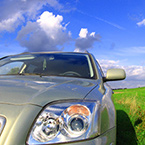 Help is on the way for drivers who can’t stand the morning commute and for families who need to travel far for vacations. Traditional safety threats such as driver fatigue, vision impairment, and drunkenness could soon become ancient history now that cars that drive themselves have become reality. Controlled by computers, software, and high-tech sensors and interfaces, cars can now safely navigate dangerous roads and allow humans to reclaim time stolen by the highway. Read on to learn more from our team at DCH Academy Honda.
Help is on the way for drivers who can’t stand the morning commute and for families who need to travel far for vacations. Traditional safety threats such as driver fatigue, vision impairment, and drunkenness could soon become ancient history now that cars that drive themselves have become reality. Controlled by computers, software, and high-tech sensors and interfaces, cars can now safely navigate dangerous roads and allow humans to reclaim time stolen by the highway. Read on to learn more from our team at DCH Academy Honda.
Widespread Development
Numerous Internet technology giants and traditional foreign and domestic automakers have created operational autonomous vehicles that eliminate the human factor from the driving experience. States such as Nevada, Florida, and California have already licensed some self-driving cars and intend to license others. Military applications for autonomous vehicles abound, offering hope that fewer people will die in combat zones from roadside bombs and other attacks.
The Technology Advantage
Computer drivers never get tired and never have their judgment clouded by emotional disturbances, distractions, or intoxicants. This means that autonomous cars can improve highway safety by eliminating driver error. Now that sufficient technology exists to build reliable self-driving cars, traditional human drivers might soon become extinct. Driving is a complicated process that requires hundreds of decisions every second. Human drivers often crash their vehicles after encountering too many variables. Cars that use computerized drivers must have systems that can identify, analyze, and respond to these variables in an orderly and accurate way. Some of these systems include:
- Pedestrian and obstacle detection systems that recognize objects on the road and calculate the best avoidance tactics
- Weather detection systems that recognize environmental cues such as rain, wind, sleet, snow, and ice to adjust driving behaviors
- GPS location awareness systems that precisely track the location of the vehicle so it always knows where to turn
- Roadway recognition and steering systems that govern lane changes, traffic congestion, following distances, speed limits, road construction signs, and other visual cues
- Proximity awareness technology that sends environmental information to computerized drivers, so automated cars can avoid collisions with other vehicles
- Inter-car communication technologies that allow autonomous cars to negotiate with each other to coordinate driving behaviors and helps cars change lanes, accelerate, decelerate, turn, and yield without risk
- Vehicle-to-infrastructure communication systems that can notify self-driving cars about road conditions, passing zones, work areas, nearby accidents, and traffic congestion to autonomous cars
- Legal compliance systems that ensure the car always obeys applicable driving laws
Manufacturers have already proved that cars equipped with these and other systems can improve vehicle and highway safety while returning countless hours of time to the global economy. Time will tell if they become a practical solution.



